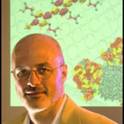Random diblock copolymer scaffolds grafted with diamidopyridine (DAP) hydrogen bonding recognition units self-assembled to furnish microspheres when mixed with monoblock copolymers decorated with complementary recognition elements. Through choice of block length, microspheres of various sizes could be produced. The relative length of the two blocks plays a crucial role in determining the formation of aggregates. PEG-b-P(S-co-S(DAP)) diblock copolymer was used to fabricate recognition induced pegylated microspheres, by non-covalent crosslinking with monoblock copolymer functionalized with complementary thymine (Thy) units. These self-assembled microspheres can be efficiently crosslinked via photochemical [2pi(s) + 2pi(s)] cycloaddition with the resultant morphology change into vesicular structures.
- block copolymers,
- encapsulation,
- molecular recognition,
- polymersomes,
- self-assembled microspheres
Available at: http://works.bepress.com/vincent_rotello/93/
